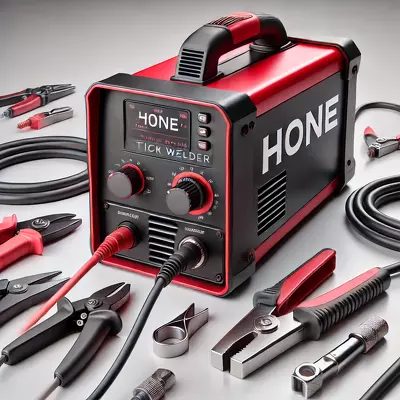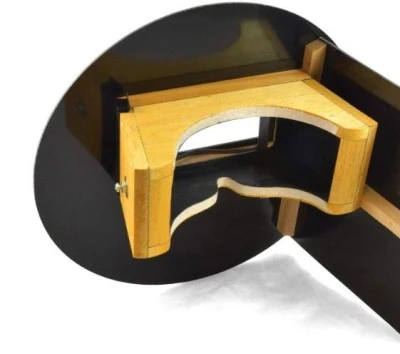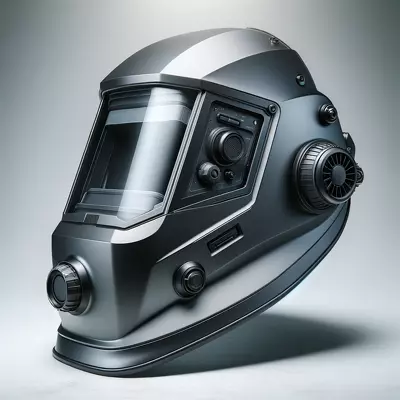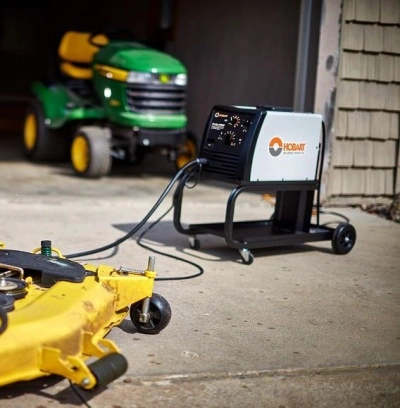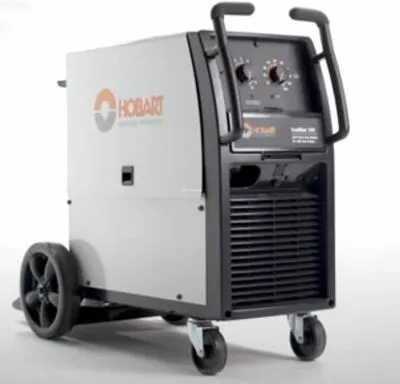Beyond the Weld: Discovering the Lincoln Viking 3350’s Unseen Brilliance
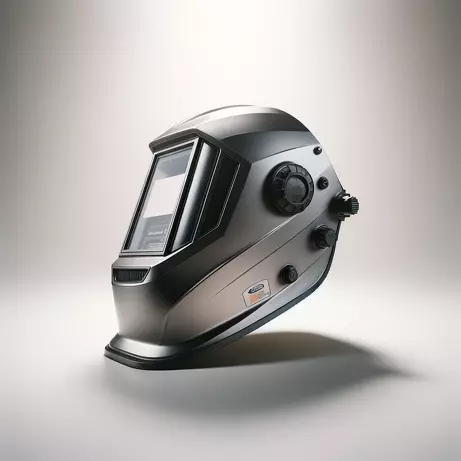
The Lincoln Viking 3350 welding helmet stands out in the market for its superior visibility, comfort, and durability. This review explores its features, performance, and how it compares to other helmets on the market. Ideal for professional welders and hobbyists alike, the Viking 3350 offers a combination of advanced technology and user-friendly design, ensuring safety and efficiency in various welding environments.
As an Amazon Associate, we earn a commission from qualifying purchases.
I. Introduction
The world of professional welding demands not only skill and precision but also the right equipment to ensure safety, comfort, and efficiency. Among the myriad options available to welders, the Lincoln Viking 3350 welding helmet has emerged as a standout choice. This comprehensive review delves into the features, performance, and overall value of the Lincoln Electric K3034-4 VIKING 3350 Auto Darkening Welding Helmet with 4C Lens Technology, offering insights into why it’s considered a top-tier option for welders across various skill levels.
II. Overview of the Lincoln Viking 3350
A. Specifications and Features
The Lincoln Viking 3350 boasts an impressive array of specifications that cater to the rigorous demands of welding professionals. It features the innovative 4C Lens Technology, which significantly enhances visibility by reducing the lime green tint common in most welding helmets. This technology aims to minimize eye strain and provide a clearer view of the weld pool. Additionally, the helmet offers a large viewing area, multiple shade levels (5-13), and an external grind mode button for easy switching between welding and grinding tasks.
B. Design and Comfort
Ergonomically designed to meet the needs of daily users, the Viking 3350 prioritizes comfort without compromising on safety. It features a balanced, adjustable headgear that reduces neck strain during extended use. The helmet’s lightweight construction further enhances wearability, ensuring welders can work for longer periods without discomfort.
C. Visibility and Lens Technology
Visibility is paramount in welding, and the Lincoln Viking 3350 excels in this area through its advanced lens technology. The 4C Lens Technology not only offers a wide color spectrum for better clarity but also protects the welder’s eyes from harmful rays. The auto-darkening feature adjusts swiftly to varying light conditions, ensuring optimal visibility at all times.
III. Performance Evaluation
A. Auto-Darkening Efficiency
The Viking 3350’s auto-darkening efficiency is noteworthy. It transitions seamlessly from light to dark states and back, significantly reducing the need to lift the helmet between welds. This efficiency not only enhances productivity but also contributes to the welder’s safety by protecting the eyes from unexpected arcs.
B. Comfort and Wearability for Long Periods
Long welding sessions require a helmet that can be worn comfortably for extended periods. The Viking 3350, with its lightweight design and ergonomic headgear, meets this need. Welders have reported a noticeable difference in comfort levels, especially during long shifts, attributing this to the helmet’s balanced weight distribution and adjustable features.
C. Durability and Build Quality
Durability is another critical aspect of the Viking 3350’s performance. Made from high-quality materials, it withstands the harsh conditions often encountered in welding environments. Its robust construction ensures that it remains a reliable piece of safety equipment for years, making it a wise investment for professional welders.
IV. Comparing the Lincoln Viking 3350 to Competitors
A. Comparison of Visibility and Lens Technology
When compared to its competitors, the Viking 3350’s visibility and lens technology stand out. Its 4C Lens Technology provides a clearer and more natural view than many other helmets in the market, which still rely on older lens technologies that can distort colors and clarity.
B. Comfort and Usability
In terms of comfort and usability, the Viking 3350 again ranks highly. Its competitors often need help to match its ergonomic design and the level of comfort it provides, especially for users wearing the helmet for prolonged periods.
C. Price and Value for Money
While the Viking 3350 may come with a higher price tag than some alternatives, its superior features and durability offer excellent value for money. When compared to other high-end welding helmets, it presents a competitive option that balances cost with quality and performance.
V. User Experience and Feedback
A. Professional Welders’ Insights
Professional welders who have used the Viking 3350 consistently praise its performance and reliability. Many highlight the significant improvement in visibility and eye comfort, which has helped them achieve better welding results.
B. Hobbyists and Occasional Users’ Reviews
Hobbyists and occasional users also find great value in the Viking 3350. They appreciate its user-friendly features and the protection it offers, making it an ideal choice for those who weld less frequently but still demand high-quality equipment.
C. Long-Term Reliability and Customer Support
The Viking 3350’s long-term reliability is well-documented, with many users reporting years of consistent performance without significant issues. Lincoln Electric’s customer support is also frequently commended for its responsiveness and assistance in resolving any concerns.
VI. FAQs
Q: What makes the 4C Lens Technology in the Lincoln Viking 3350 unique?
A: The 4C Lens Technology significantly enhances visibility by reducing the lime green tint and providing a clearer view of the weld pool, which minimizes eye strain and improves weld quality.
Q: Can the Lincoln Viking 3350 be used for grinding?
A: Yes, the helmet features an external grind mode button that allows easy switching between welding and grinding tasks without removing the helmet.
Q: Is the Lincoln Viking 3350 suitable for all welding processes?
A: The Viking 3350 is versatile and suitable for a wide range of welding processes, including MIG, TIG, and stick welding, thanks to its variable shade levels and large viewing area.
Q: How does the auto-darkening feature work in varying light conditions?
A: The auto-darkening feature quickly adjusts the lens shade in response to the welding arc’s brightness, providing optimal visibility and protection across different lighting conditions.
Q: What is the weight of the Lincoln Viking 3350?
A: The helmet is designed to be lightweight to reduce neck strain during extended use, though the exact weight can vary slightly based on the specific model and accessories.
Q: Are there any alternatives to the Lincoln Viking 3350 for those on a tighter budget?
A: For welders seeking a more budget-friendly option, there are cheaper welding helmets available that still offer decent protection and features. However, they may not match the Viking 3350’s advanced technology and comfort.
Q: How do Tekware welding helmets compare to the Lincoln Viking 3350?
A: Tekware welding helmets are known for their innovative features and affordability. While they offer good value, the Lincoln Viking 3350 generally surpasses them in terms of lens technology, visibility, and overall build quality.
VII. Conclusion
A. Review Summary
The Lincoln Viking 3350 emerges as a premier choice for both professional welders and hobbyists. Its advanced 4C Lens Technology, superior comfort, and robust construction set it apart from competitors, making it an excellent investment for anyone serious about welding.
B. Best Alternative
For those considering alternatives, the YESWELDER Large Viewing True Color Solar Powered Auto Darkening Welding Helmet with SIDE VIEW is a noteworthy option. It offers a large viewing area and true color technology at a more affordable price point, making it a strong contender for welders looking for quality and value.
C. Who Should Consider the Lincoln Viking 3350
The Lincoln Viking 3350 is ideal for welders who prioritize visibility, comfort, and long-term reliability in their welding helmets. Its advanced features and construction make it suitable for intensive use in professional settings, as well as for hobbyists seeking high-quality equipment.
VIII. Suggested Readings
The pursuit of mastery in welding requires not only the right equipment but also a deep understanding of the craft. The following books offer valuable insights and techniques for welders at all levels:
- “Welding: Principles and Applications” by Larry Jeffus – A comprehensive guide covering various welding techniques and principles, ideal for both beginners and experienced welders.
- “The Welding Business Owner’s Hand Book” by David Zielinski – Offers practical advice on starting and operating a successful welding business, including equipment selection and management strategies.
- “Modern Welding” by Andrew D. Althouse, Carl H. Turnquist, William A. Bowditch, Kevin E. Bowditch, and Mark A. Bowditch – A detailed textbook that provides an in-depth look at modern welding techniques and safety practices.
Welding is both an art and a science, demanding continuous learning and adaptation. These suggested readings complement the hands-on experience gained through practice, offering theoretical knowledge and insights that can enhance welding skills and understanding. Whether you’re a seasoned professional or a newcomer to the field, expanding your knowledge through these resources can contribute significantly to your development as a welder.

